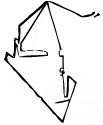
Taryn Simon è conosciuta soprattutto per due lavori fotografici che hanno fatto e stanno ancora facendo un notevole giro di musei, fondazioni e gallerie d'arte contemporanea.
Il primo è The Innocents, ritratti di cittadini americani imprigionati ingiustamente.
Il secondo e più recente è An American Index of the Hidden and Unfamiliar, immagini di luoghi chiave della società americana che sono inaccessibili ai cittadini (Dogana, CIA, laboratori scientifici, etc.).
I due lavori sono molto diversi tra loro, il primo composto da ritratti in grande formato, realizzati proprio nei luoghi chiave che hanno provocato la detenzione ingiusta patita da queste persone, risollevando il problema delle fotografie e delle prove indiziarie che li hanno collegati a quei posti; il secondo ritrae invece misteriosi luoghi asettici con un effetto di sottile ironia o sarcasmo (un esempio è la sala della collezione artistica della CIA), con un estetica molto 'alla tedesca'.
L'impressione è che Taryn Simon realizzi i suoi progetti con un assunto teorico di partenza molto preciso, che poi realizza con immagini sulle quali è in grado di applicare esattamente un linguaggio visivo piuttosto che un altro. Il lavoro editoriale l’ha probabilmente aiutata in quest’abilità nel padroneggiare cambiamenti di linguaggio.
D'altronde un suo tema forte sembra proprio essere la questione del vedere: la sua attendibilità è il tema del primo lavoro, mentre nel secondo si parla dell'invisibilità e al tempo stesso dell'importanza di determinati luoghi.
Taryn Simon is widely known mainly for two photographics works that made and are still making a considerable tour around museums, art foundations and galleries.
The first one is 'The Innocents', made with portraits of American citizens wrongly accused and imprisoned for violent crimes.
The second and most recent one is 'An American Index of the Hidden and Unfamiliar', images of spaces that are crucial for the identity of the American society, but remain inaccessibile for ordinary citizens (U.S. Customs, CIA, scientific labs, etc).
The two works are quite different from each other, the first one is a series of large format portraits, made in the places that determined the illegitimate conviction suffered by those people, raising again the question of the photopraphs and the other evidences that connected them to those places; the second one depicts mysterious and aseptic spaces with an effect of subtle irony and sarcasm (the hall of CIA art collection, for example) and with an overall visual ‘German style’.
The impression is that Tary Simon elaborates her projects starting from a strong theoretic assumption that is later realised through images, on which she chooses to apply one visual language rather than another one. Her work in the editorial field probably helped her in this ability to master those language shifts.
But it’s also evident that one strong issue for her seems to be exactly the question of seeing: its reliability in the first project and the relevance and the invisibility of certain places in the second one.
Sunday, December 16, 2007
Dietro le quinte
Labels:
Storie d'immagini/Visual stories
Subscribe to:
Post Comments (Atom)

No comments:
Post a Comment